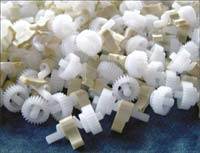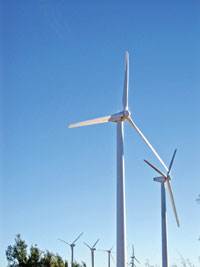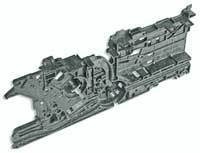nanocomposites
New Processes Give Automotive Molders An Edge in Cost and Productivity
Car makers' all-out effort to cut costs is giving rise to new paint-free technologies, including an innovative 'simultaneous-shot" injection molding process that was presented at the SPE Automotive Division's latest annual Innovation Awards ceremony.
Read MoreNew Contender Seeks a Niche in Specialty Engineering Compounding
The U.S. compounding business is getting intensely specialized as OEM manufacturers ship commodity work to China and focus more on value-added products here.
Read MoreK 2004 Wrap-Up on Materials: Setting New Benchmarks for Processability and Performance
Higher flow, higher heat, higher barrier, higher clarity, higher stiffness, lower durometer, lower smoke, lower odor—materials exhibits at the recent K 2004 show in Dusseldorf were stretching the bounds of processing and performance properties in all directions.
Read MoreK 2004 Wrap-Up on Additives: Problem-Solving Additives Tackle New and Old Challenges
The latest K show was rich in additives that can ease processing and end-use problems of thermoplastics and thermosets.
Read MoreEngineering Thermoplastic Processes Like a Thermoset
The first quarter of 2005 will see the first commercial production of a dramatically new family of resins that offer the processing advantages of liquid thermosets plus the properties and recyclability of engineering thermoplastics.
Read MoreD-LFT Composites Aim for Auto Body Panels
Direct long-fiber thermoplastic (D-LFT) compounding and molding is getting ready to expand beyond non-appearance structural automotive parts to exterior body panels.
Read MoreSpecialty Thermoplastic Compounds Push the Envelope in All Directions
At least eight new developments are pushing specialty thermoplastic compounds into higher levels of performance and opening up new areas of potential applications.
Read MoreChasing Nanocomposites
Nano-sized particles have mega-potential in plastics because just a pinch does so much more than heavy loadings of other additives. Three recent conferences presented almost 200 papers on the feverish pace of ‘nano’ R&D on boosting plastics’ mechanical and barrier properties, flame retardancy, and electrical conductivity.
Read MoreHow to Turn Auto Shredder Waste Into 60 Million Lb of Plastic Pellets
While much of the world is studying the possibility of getting any economic value out of auto shredder residue—for example, as fuel for cement kilns or power plants—Europe’s second largest scrap-metal reclaimer cranks out polyolefin and polystyrene pellets made from shredder residue at 20,000 to 100,000 lb/hr, or about 40 million lb/yr.Galloo Plastics, the recycling unit of the Galloo Group in Halluin, France, has been so successful at supplying automotive markets with its black PP compounds that it built a second auto shredder residue (ASR) recycling plant this year next to the first, inside its huge scrap yard.
Read MoreK 2004 News Preview: Materials
Quite a few new polyolefins are being featured at this year’s show, with a particular emphasis on specialty PP and PE materials.
Read More


















